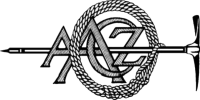- Home
- Nepal
- Adventure Activities
- Peak Climbing
- Mountain Expedition
- Local Tours
- Sirubari Village Homestay
- Ghale Gaun
- Kalinchowk Tour
- Halesi Mahadev - Maratika Cave package
- Chitwan Jungle Safari
- Day tour in Kirtipur
- Day tour in Kathmandu City
- Spiritual Tour to Muktinath
- Chitlang and Kulekhani
- Bardiya National Park
- Jeep Tour to Rara Lake
- Gosaikunda Lake
- Manakamana day Tour with cable-car ride
- 4WD Jeep Tour to Upper Mustang
- Family Holidays
- Heli & Mountain Flights
- Trekking Routes
- Kailash Mansarovar
- Bhutan
- Tibet
- Multi Country
- Domestic Flights
- Contact
- Home
- Nepal
- Adventure Activities
- Peak Climbing
- Mountain Expedition
- Local Tours
- Sirubari Village Homestay
- Ghale Gaun
- Kalinchowk Tour
- Halesi Mahadev - Maratika Cave package
- Chitwan Jungle Safari
- Day tour in Kirtipur
- Day tour in Kathmandu City
- Spiritual Tour to Muktinath
- Chitlang and Kulekhani
- Bardiya National Park
- Jeep Tour to Rara Lake
- Gosaikunda Lake
- Manakamana day Tour with cable-car ride
- 4WD Jeep Tour to Upper Mustang
- Family Holidays
- Heli & Mountain Flights
- Trekking Routes
- Kailash Mansarovar
- Bhutan
- Tibet
- Multi Country
- Domestic Flights
- Contact
Damodar Kunda
An exciting Cultural experience
Tiji is an annual festival celebrates in Upper Mustang at Lo-Manthang according to the Tibetan rituals. Tiji “Tenpa Chirim” is the short version of the prayer for the World Peace. It celebrates for 3 days in the months of May.
It commemorates the victory of Lord Buddha’s incarnation Dorjee Sonnu over a demon called Man Tam Ru a cruel creature feeding on human beings and causing storms and droughts.
Upper Mustang Tiji Festival Trekking is one of the good trekking in Nepal. Tiji festival is a very important spiritual festival, which is celebrated in Lo-Manthang organized by the monks of the “Choedhe” monastery and perform ritual dances during the celebration.
The Tiji Festival features a three-day ritual known as the 'chasing of demons'. The festival is to coincide with the end of the dry season (late winter/spring).
On the 1st day, the monks perform a dance called ‘Tsa Chaam’ which says the tale of the birth of ‘Dorji Sonam’- a reincarnated Buddha to a demon. This demon harassed the kingdom of Mustang and brought in havoc to the country. You can witness the monks enacting the harassment of the said demon on the people of Mustang.
On the 2nd day, the monks perform ‘NgaCham’. During this performance, Dorjee Sonam tries to return the demon to the Buddha realm.
On the 3rd and final day of the festival, the ‘Rha Chham’ dance takes place. In this ceremony, Dorjee Sonam triumphs over the evil demon and banishes him from Mustang.
The monk who plays the role of Dorjee Sonam does this by throwing an effigy. This effigy made from Tsampa (barley) represents the demon ‘Ma Tam Ru Ta’.
Destination: Mustang, Nepal
Trip Routes: Kathmandu - Pokhara - Kagbeni; Jomsom - Chele - Syangboche - Ghami - Charanag - Lo-Manthang - Tiji Festival - Dhakmar; Ghar Ghompa - Somar - Kagbeni - Jomsom - Pokhara - Kathmandu
Activities: Trekking and Sightseeing
Season: May to August
1 - 16
Detailed Itinerary
- Day 1 Arrive in Kathmandu [1300m / 4264 ft]
Upon your arrival at the Kathmandu airport, we will greet you and transfer to your Kathmandu booked hotel by our private car. - Day 2 Kathmandu Sightseeing
Today after breakfast we start a guided tour to some UNESCO world heritage sites around Kathmandu. - Day 3 Kathmandu to Pokhara [823m/2,700ft]: 6 hrs drive
Early morning at around 7 am, we drive towards Pokhara on a tourist bus. Enroute we will see more of the countryside of Nepal that offers greeneries, rivers, villages, farms and beautiful mountain sceneries. Afternoon, we reach Pokhara. We can explore the beautiful Fewa Lake during the afternoon -enjoy boating too. - Day 4 Pokhara fly to Jomsom and trek to Kagbeni (2,858m):20 minutes flight and 3-4 hours trek
We will take a flight early in the morning to Jomsom of about 25min with spectacular views of the Mountains. After reaching Jomsom, start trekking to Kagbeni. - Day 5 Trek from Kagbeni to Chele [3050m/10,004ft]: 5-6 hrs
Firstly we trek Tangbe village with narrow alleys amongst whitewashed houses, fields of buckwheat, barley, wheat, and apple orchards. Then, We head on to small ridges reach at Chele village. - Day 6 Trek from Chele to Syangboche (3800m/ 12467ft) walk 6 hrs
Today’s walk is more into undulating trails with a couple of steep climb and descents. Despite 6 hour walk the tremendous canyons with its unusual color that opens out is extraordinary. In this bizarre, the farming fields with rich red buckwheat and brilliant green and the south view offering you a panorama of Nilgiri, Annapurna, Tilicho Peak, and YakawaKang adds up to its magnificence. - Day 7 Trek from Syangboche to Ghami (3520m/ 11548ft) walk approx 5 hrs
From Syangboche we climb gently to a small pass of 3800m/12,467ft with extraordinary views of mountains and deep valleys into the wind eroded canyons. - Day 8 Ghaymi to Charang [3500m/11,480ft]: 4-5 hrs
Start the trek after breakfast with a pleasant walk. After crossing Ghaymi Khola, the trail climbs to a plateau and passes beside a very long Mani wall, a sacred stone wall made by the followers Buddhism. From the end of the wall, the trail heads east to the village of Charang. - Day 9 Charang to Lo- Manthang (3700m): Walking Distance 5-6 hours
Today, we trek to Lo-Mangthang with a magnificent view of Nilgiri, Tilicho, Annapurna I and Bhrikuti peak. The trail first descends to Charang Chu Canyon and then climbs steeply after crossing the river. Further, the trail ascends gently to the 3,850m windy pass of Lo, from where you can see the Lo-Mangthang Valley. - Day 10 The Tiji Festival begins 1 day of Tiji; May 31
This day is the 1st day of the Tiji Festival. We enjoy ritual dance by the monks and other celebrations. Many masked dancers in grand costumes will come to the square before the Royal Palace. The Lamas and monks of the Nyingmapa community play the music. There will also be horse racing and tug-of-war. - Day 11 Second Day of Tiji Festival; June 01
On the second day of Tiji, We’ll see Tibetan women in their traditional clothing and colorful jewelry, monks in their robes and dancers in elaborate costumes. The costumes and masks, the twelve-foot horns, the gold cups of wheat, the butter cakes, the snow peaks and wind and dust and sun, the mehti, snow leopard, snow pigeons, saligrams, the dying glacier and the desert ruins, the drunks and rajas and foreigners, the dogs and yaks. - Day 12 Third day of Tiji and end of Festival; June 02
On the third day, Tiji ends with the ceremonial destruction of the evil remains, represented by some long black yak hair and red torma cakes minced to a dark red gurry. The demons red remnants are set out on an old tiger skin, whereupon they are attacked by bow and arrow, slings, and the old guns. The poor devils' remains are overturned upon the ground, each time to a wild cannonade from the old muzzle-loaders and a wave of cheers and smoke. - Day 13 Trek to Dhakmar via Ghar Gompa (3800m/ 12467ft) walk 7 - 8 hrs
Today we will walk different west terrain which offers you the most beautiful view despite a few steep downhill trials. We visit the world’s oldest Tibetan monastery Ghar Gompa built around the 7th century by the incarnated monk Padmasambhava. - Day 14 Trek to Somar / walk approx 7 hrs
We trace back to the village of Somar where on the way back you have ample opportunity to look back into the missed out views. - Day 15 Trek to Kagbeni walk approx 7 hrs
We again trace back our trail towards Kagbeni. - Day 16 Trek to Jomsom ( 2725m) around 3 hrs walk
This morning we trek along the wonderful trail through more Mustang villages, where we will feast on delicious apples and see the traditional back-loom weaving techniques being practiced by the local women. - Day 17 Fly to Pokhara
We take an early morning flight from Jomsom to Pokhara – a fantastic way to round off the trek, flying right along the Kali Gandaki Gorge between the Annapurna and Dhaulagiri ranges. Catch further flights to Kathmandu. - Day 18 Drive back to Kathmandu
After exploring the peaceful lake city of Pokhara, today we take drive back to Kathmandu which normally takes around 6 hrs. - Day 19 Departure
We will drive you to the airport 3 hours before your flight.
This trip can be redesigned or redeveloped as per your taste, For more information please e-mail us at This email address is being protected from spambots. You need JavaScript enabled to view it.
Cost and dates
We do small group trek or private trip as your request.
For quick information / contact us at whatsapp/viber + 977 9841815039
Or Drop us inquiry at This email address is being protected from spambots. You need JavaScript enabled to view it.
Frequently Asked Questions
It is always a good idea to involve yourself in doing physical exercises before trekking. Not that you have to be all athletic and muscular to trek. An average level of physical fitness will make the journey less stressful.
Availability of drinking water is not the problem. The problem is the cost of it at higher altitude. As you gain height, the price of water rises up to 2-3$ per liter.An alternative way of getting drinking water is by having your water bottles filled in tea houses. Tea houses will provide you boiled water for about 1$ per liter. They are completely safe for drinking.
Food is not of any concern while trekking. You will get all kinds of cuisines. For breakfast, tea houses will provide you with eggs cooked in your preferred style along with pan cakes, bread butter, roti, and so on.Various other dishes like pizza, pasta, momo, chowmein and many more are also available. The most preferred dish is Dal Bhaat. It is a typical Nepali meal. Rice is served with vegetable curry, lentils, tomato chutney and meat curry.
Trekking is an extreme sport and does come with a lot of risks. Some unavoidable risks are avalanche, heavy rainfall, earthquake, landslide and other such natural calamities.You might fall and injure yourself or catch some viral flue. The deadliest risk of trekking is AMS or Acute Mountain Sickness. This sickness occurs when a great altitude is gained and the body fails to adjust to the changing pressures associated with it. Anyone can fall a victim of the sickness and if not treated in time, it can be fatal.
There is no such hard and fast rule that you must have one. But it is highly advisable to travel with them. Some of the treks cannot be trekked without a guide most of them are the restricted ones.
Visit us
-
JP Marga, Thamel, Kathmandu, Nepal
-
+977-01-5365371
-
+977 98418-15039
(Whats App, Viber & Telegram)








